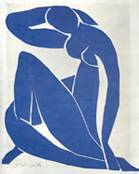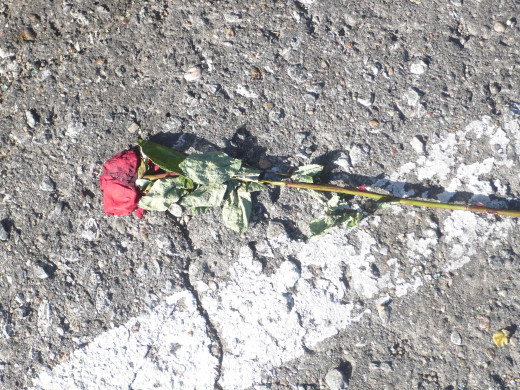Who Was Henri Matisse: An Essay
Blue **** II

Faded Rose

Henri Matisse: Blue **** 1952
Henri Matisse was an artist that was prolific in the early twentieth century. He was a contemporary of Pablo Picasso. He was a favorite artist while he was alive and had many who collected his art. He worked in paint, sculpture and other mediums. Matisse began painting when his mother bought him paints when he was sick as a child. He continued to paint to overcome his anxiety as he grew to adulthood. He was influenced greatly by Japanese art. He loved using color in his work.
Matisse began the Blue **** series (HubPages filters prevent me from using the second word in the title) in the early 1950’s. He was becoming ill, and the cutouts were easier for him to do. He would paint the cutouts and arrange them to create his works of art. He liked this medium because it gave him a chance to draw on paper and it also allowed him to continue his art when he was completely bedridden.
Essentially, Blue **** II was six pieces of painted paper arranged to form a silhouette of a woman. It was a part of several pieces of work, all portraying a blue woman in different poses. These were some of his more popular art.
Matisse did these works of art at a time in his life when he was facing the end of many things. He wasn’t healthy enough to paint and sculpt, as he once did. However, he wanted his art to continue. He didn’t want to give up on his dream of creating art. His art gave him dreams that his life and his work would live long into the future.
The photo I took symbolizes a love lost, while at the same time somehow giving hope that love would outlast anything. A red rose is the symbol of new love – when a woman receives a rose from her lover for the first time, she is thrilled and amazed. All hope for a new relationship flourishes, as does the rose. The woman will nurture the rose as she nourishes the hope for the relationship. All is new and exciting – just as Matisse’s art was when he was younger. Matisse nurtured his art and created masterpieces that he expected to live forever.
In my picture, this rose has been tossed aside. It still has all of the color of a fresh rose – red petals, green stem, brown thorns. But it is no longer fresh and new. It is starting to fade. Was it tossed because the rose began to fade? Or did the rose fade after it was thrown on the ground? There is still some hope for the flower – and possibly for the love that inspired it. The woman who tossed the rose could recapture the flower and freshen it with water. There is a chance that it would rejuvenate – like love given a second chance. Perhaps it might even continue to grow.
But there is also a chance that the rose has already died. Much like Matisse’s career, when he created Blue Nude II. It was still beautiful, but no longer the painting and the sculpture that he once loved so much. The love inspired by the rose might not have any hope, either. It could be beyond saving, the last drops of water are gone and not a hope for revival.
Seeing the rose on the asphalt made me wonder why it was there. Was it simply tossed aside as an afterthought after a night out on the town? Or was it thrown aside after a lovers spat? Maybe it was just dropped and some poor woman was mourning the loss of a beautiful flower given to her by her husband of many years. And like Matisse’s Blue **** II, their love will live forever.








